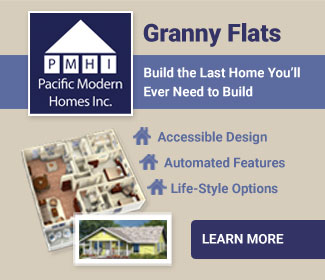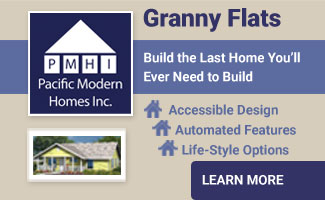
Assuming that you will need a loan to build your new home, it is important to first determine two things:
1. The maximum loan amount for which you can qualify?
2. The largest monthly loan payment with which you will be comfortable?
The answers to these two questions will determine your maximum construction budget.
In order to determine the maximum loan amount you qualify for, our preferred construction lender considers your credit score, income and debt. Keep in mind, to build a new home actually requires two loans, the construction loan and the long term loan (or conventional mortgage) that replaces the construction loan after the construction is completed. In many ways, the construction loan is the most important since it must be structured in such a way to conveniently pay the construction bills as your home progresses. Hence, the importance of using an experienced “new construction” lender that will also “bundle” the construction and long term loans.
Another aspect of the construction lending process is to determine the anticipated value of the completed project. This is an important part of the construction lending process because, in general, the lender will loan about70 - 80% of the appraised value of the completed project, including the land costs. For construction lending purposes, the Appraiser uses the building plans to arrive at the anticipated value.
After your initial consultation, we will have our preferred lender follow up with you with financing options.








 Assuming that you will need a loan to build your new home, it is important to first determine two things:
Assuming that you will need a loan to build your new home, it is important to first determine two things: When planning where you want to build your new home it is important to consider the following:
When planning where you want to build your new home it is important to consider the following: Pre engineered plans or custom plans? Gold Country Kit Homes can help you determine which home plan approach is best for you. You can choose from one of our 36 existing pre-engineered plans that meet or exceed current building codes. We can also modify one of the pre-engineered plans to meet your specific needs. We can also produce a uniquely custom plan just for you or work with plans you may already have. While you are deciding which plan best meets your needs, we will consult with you about the construction costs associated with the different design features you would like have in your new home. Some features, like higher roof pitches or casement windows, can increase your building costs. You might prefer to use that money in other areas of your building project. It is important for you to choose a home plan that best fits your family’s needs as well as your budget…..and also fits your building site.
Pre engineered plans or custom plans? Gold Country Kit Homes can help you determine which home plan approach is best for you. You can choose from one of our 36 existing pre-engineered plans that meet or exceed current building codes. We can also modify one of the pre-engineered plans to meet your specific needs. We can also produce a uniquely custom plan just for you or work with plans you may already have. While you are deciding which plan best meets your needs, we will consult with you about the construction costs associated with the different design features you would like have in your new home. Some features, like higher roof pitches or casement windows, can increase your building costs. You might prefer to use that money in other areas of your building project. It is important for you to choose a home plan that best fits your family’s needs as well as your budget…..and also fits your building site. At this point, you must decide if you want to be an “Owner/Builder”, that is, to act as your own General Contractor, or hire a General Contractor to run the job for you. The most economical way to build a new home is to do all the work yourself. However, most people do not have the time or all the required skills. If you decide to act as an Owner/Builder, simply managing the job by hiring all the necessary subcontractors you can still realize savings of approximately 20% or more. If you hire a General Contractor, you will also be paying the General Contractor to manage the job for you.
At this point, you must decide if you want to be an “Owner/Builder”, that is, to act as your own General Contractor, or hire a General Contractor to run the job for you. The most economical way to build a new home is to do all the work yourself. However, most people do not have the time or all the required skills. If you decide to act as an Owner/Builder, simply managing the job by hiring all the necessary subcontractors you can still realize savings of approximately 20% or more. If you hire a General Contractor, you will also be paying the General Contractor to manage the job for you. Submitting your completed plans to the building department is the last step to be done before starting the actual building process. The permit process can vary from one day to months, depending upon the state, county or city in which you are building. On average, most building department take about six to eight weeks to complete their process. A major advantage of using a plan designed and engineered by PMHI is that we guarantee that the plans and engineering will pass all of your local building department’s requirements (except site specific issues such as your site plan, energy calculations, etc.).
Submitting your completed plans to the building department is the last step to be done before starting the actual building process. The permit process can vary from one day to months, depending upon the state, county or city in which you are building. On average, most building department take about six to eight weeks to complete their process. A major advantage of using a plan designed and engineered by PMHI is that we guarantee that the plans and engineering will pass all of your local building department’s requirements (except site specific issues such as your site plan, energy calculations, etc.). After you have received your building permit you can get started building your new home. Depending upon the complexity of your project, the building of your new home can take anywhere from 3 – 12 months on average. If you are an Owner Builder, you’re the boss. You are acting as the General Contractor. As such, you are responsible for the success of your project. Owner Builders hire licensed contractors to do whatever work they have chosen not to do themselves. Most Owner Builders choose to work with our contractor referrals However, Owner Builders are not required to work exclusively with contractors from our contractor referral list if they have someone else they would prefer to use. During the building process is when Owner Builders find our help to be the most valuable. During the construction phases you should take pictures showing the progress of the building project. This is done for two reasons. First, it is a way to remember the details of the construction process and to show your family and friends. Second, you have a record of where the utilities are located in the structure. This can be especially helpful if you want to make sure not to put a nail into any plumbing, gas lines or electrical cables behind the sheet rock when hanging a picture on the wall.
After you have received your building permit you can get started building your new home. Depending upon the complexity of your project, the building of your new home can take anywhere from 3 – 12 months on average. If you are an Owner Builder, you’re the boss. You are acting as the General Contractor. As such, you are responsible for the success of your project. Owner Builders hire licensed contractors to do whatever work they have chosen not to do themselves. Most Owner Builders choose to work with our contractor referrals However, Owner Builders are not required to work exclusively with contractors from our contractor referral list if they have someone else they would prefer to use. During the building process is when Owner Builders find our help to be the most valuable. During the construction phases you should take pictures showing the progress of the building project. This is done for two reasons. First, it is a way to remember the details of the construction process and to show your family and friends. Second, you have a record of where the utilities are located in the structure. This can be especially helpful if you want to make sure not to put a nail into any plumbing, gas lines or electrical cables behind the sheet rock when hanging a picture on the wall. Move-in day is the reward you’ve worked so hard to achieve. It’s the time you get to realize your dreams of living in your new home….a home that you had a major part in the actual planning and construction. Depending upon the amount of work you actually did as an Owner/Builder, you may have 20% to 40% equity in your new home the day you move in. (Amount of actual equity varies from project to project and cannot be guaranteed.)
Move-in day is the reward you’ve worked so hard to achieve. It’s the time you get to realize your dreams of living in your new home….a home that you had a major part in the actual planning and construction. Depending upon the amount of work you actually did as an Owner/Builder, you may have 20% to 40% equity in your new home the day you move in. (Amount of actual equity varies from project to project and cannot be guaranteed.)








